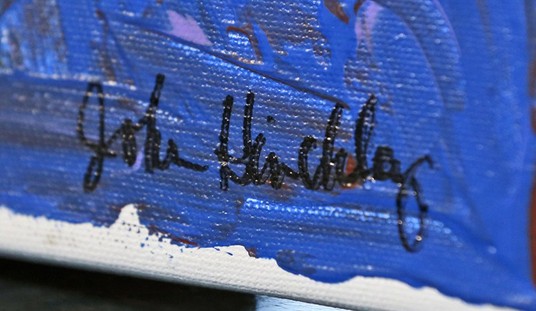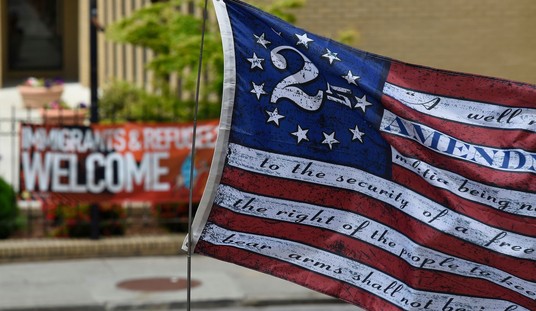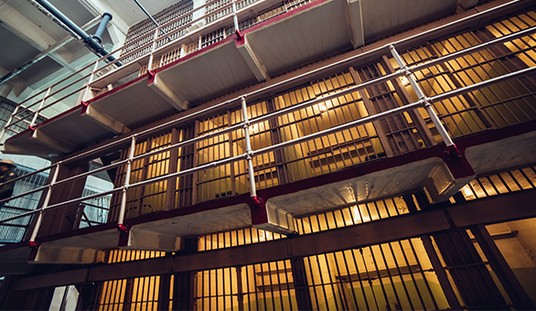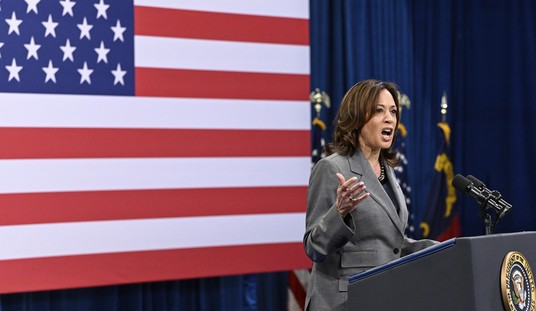Chicago Police are said to be bracing for violence after releasing body camera and in-car video from an incident that resulted in the death of alleged car thief Paul O’Neal after he nearly ran an officer down during a high-speed pursuit.
Police shot and killed O’Neal last Thursday night near East 74th Street and South Merrill Avenue, while they were trying to stop the car he was driving – a Jaguar police said was reported stolen from southwest suburban Bolingbrook earlier in the day.
The video shows an officer shooting at the stolen car, which advanced towards his partner. Then the stolen car rammed into another squad car. The officers involved in the crash chased O’Neal on foot.
One of those officers shot him in a nearby backyard, after telling him to put his hands up. Then officers screamed at O’Neal while he was on the ground dying, saying, “Why did you have to shoot at us?”
No one was seen rendering any aid.
A source told ABC Eyewitness News that apparently the officers who fired the fatal shots thought O’Neal had fired on the officers who were first on the scene.
O’Neal was shot in the back. He was unarmed at the time.
Video of the shooting was recovered from dashboard cameras and body cameras worn by two of the three officers who fired at O’Neal. Police said the shooting itself was not captured because the body camera worn by the officer who fired the fatal shot was either not working or fell off during the chase. The officers had received their body cameras 8-10 days before the shooting said Frank Giancamilli, a CPD spokesman.
So, there isn’t any video captured by the officer who shot O’Neal, and there is not footage of O’Neal being shot by any Chicago Police Department officer. Let’s take a look at what we do have.
Bodycam Video #1 (above) shows the perspective of one of the officers who shot at Paul O’Neal as O’Neal bore down on his partner at a high rate of speed and then blew between them as they tried to effect a roadblock.

In a still-frame captured from this body camera video, you can see the stolen black Jaguar (O’Neal and a juvenile suspect inside) swerving towards the officer on the left side of the frame. The officer wearing this body camera fires at stolencar and runs around the front of the police SUV,still firing, as the car drives past and the officer on the driver’s side of the car narrowly escapes being hit. The officer who was nearly run over appears to fire several shots as well, based upon audio. It’s difficult to tell how many shots were fired, but it sounds like somewhere between 10-12 were fired in total in 3-4 seconds.
They fired at the vehicle until it was maybe 30-40 yards away (distance is difficult to estimate due to lens distortion) as shown below.
The officer manning this body camera does not fire any more shots after this point. He does a tactical reload during the foot chase after O’Neal jumps from the car, but that concludes his weapon handling.
As this officer’s perspective was that O’Neal made an attempt to run down his partner (attempted vehicular homicide) and was fast approaching another police SUV and posing a threat to them (indeed, they hit them in a head-on collision that injured both officers), it appears that continuing to fire was lawful under the guidelines of Tennessee v. Garner, 471 U.S. 1 (1985).
While apparently lawful, the shots fired by the officers after O’Neal passed by may or may not comply with Chicago Police Department policymakers.

The officer attempts to join in a foot chase of O’Neal, but once they get in a back yard, he can’t get over the fence. Five deliberate shots are heard as he stands at the fence. Once he goes around several houses, he comes upon the scene of a suspect (presumably O’Neal) being cuffed, but the camera does not capture any footage of O’Neal who is cuffed on the ground below the camera’s point of view.

Let’s go to the second body camera video.
This is the officer who was nearly run down by the stolen car, and his escape is clearly a narrow one. He has just enough time to clear his vehicle door, push it shut, and draw his weapon before the Jaguar barrels right at him, and he’s forced to jump left out the way. He manages 1-2 shots at the car that nearly ran him down.

The officer with body camera #2 and body camera #1 join the foot pursuit and have almost identical perspectives, but the officer with camera #2 has it angled so that it points down slightly more, and he captures the scene of other officers over O’Neal on the ground when he arrives.

He takes part in cuffing O’Neal, who is clearly injured, with a large amount of blood showing on his upper right rear quadrant.

After O’Neal is cuffed and another officer is providing an address for EMS, officers involved in the chase and crash begin checking themselves for possible bullet wounds and other injuries.
Yes, it is possible to be shot and not know it due to adrenaline.
On to body camera #3
This officer arrives after the shooting, and captures some of the post-incident radio traffic and a different perspective. This officer is one of the supervisors. He tells officers well after the shooting to turn off their cameras and not to talk about the incident until the administrative process starts. If you like looking at rolls of crime tape, this is the film for you.
On to body camera #4, who appears to be from the officer who fired the fatal shot.
This video shows the perspective of the officer in the police SUV that the stolen Jaguar impacted head-on.
The footage from this camera shows neither the collision, the shooting or the foot chase, and it is unclear if the police withheld some of the video or if this is all the officer’s camera captured. The officer discloses that “I think I shot that M-Fer,” (referring to one of the two suspects), and a black female officer (below) points at her body camera to remind him not too say anything directly after the incident.
Note that he hasn’t said anything, good, bad or ugly, and certainly nothing incriminating at that point, and she is simply looking out for a fellow officer. She is reminding him to do what every officer and concealed carrier should do if they are ever involved in a shooting, which is to shut up and not talk about it until your adrenaline levels have returned to normal and your brain has had a chance to process what has occurred.
Research has shown that in the wake of a shooting it generally takes two sleep cycles (48 hours) for your brain to return to normal and correctly remember the details of an incident.

The vehicle used by the officer using body camera #4 took a pretty hard hit (you’ll see it in in car camera #1’s footage) during the head-on collision, and his partner suffered a minor leg injury.

Another officer asks him where he fired shots from, and the officer with the body camera walks him into a back yard, where they begin to look for shell casings.

He reveals that he heard shots as the Jaguar came toward them, and that he fired five times from this area as the suspect fled, but that he did not see a weapon. This suggests he is the officer who fired the shots heard while the officer with body camera #1 paused beside the fence.
Again, this may have been lawful under Tennessee v. Garner, 471 U.S. 1 (1985) as the officer believed that the suspects were armed and fired at officers before the crash. This holds true even if the shots fired was actually from the first pair of officers shooting at car that apparently tried to run one of the officers down.
Le’ts go to in-car camera #1, which is a short one, as far as the video goes. It gets banged up hard as the stolen Jaguar hits the police SUV head-on 4 minutes and 14 seconds into the incident.
As the smoke clears you can hear the five deliberate gunshots being fired, probably from the officer with body camera #4.
In-car camera videos #2, #3 #4 shows post-incident footage from the same vehicle over time, and are as thrilling as watching paint dry.
Let’s go to in-car camera #5
In car camera #5 shows the in-car perspective of the officer in body camera #1 as O’Neal’s car swerves towards the officer who emerged from the driver’s side. It captures the audio of shots being fired, and the officer with body camera #1 passing in front of the vehicle while firing.
 The camera captured nothing else of note, other than other police vehicles that swarmed the area after the incident, a wide range of races, ages and sex of officers responding to the scene and some broken radio traffic.
The camera captured nothing else of note, other than other police vehicles that swarmed the area after the incident, a wide range of races, ages and sex of officers responding to the scene and some broken radio traffic.
The officer who is said to have fired the fatal shot did not a camera recording at the time of the incident.
The family, friends, and attorney of Paul O’Neal all have very strong opinions about what these videos show.
O’Neal’s family left IPRA headquarters through a back door in tears. Ja’Mal Green, spokesperson for the O’Neal family, said they believe they witnessed an execution on the video. They said they believe the police meant to kill O’Neal.
“We just watched a family watch the execution of their loving son. It is one of the most horrific things that I have seen, aside from being in a movie. These police officers decided to play judge, jury and executioner,” Oppenheimer said.
“This is amazing to me, how these officers come in our neighborhoods and treat us like savages. The way Paul was treated was ridiculous, you know, if I could say,” Green said.
Jedidiah Brown, a community activist, said after he watched the videos in the same room as O’Neal’s family Friday morning, he was heartbroken and angry. He said he thinks what he saw will create a larger divide between Chicago police and the community they serve.
“Watching that video, I feel like that was a tear right down the middle of the relationship between the community and police,” Brown said. “I saw an officer stomp a lifeless body in the back with his foot, while other officers stood over his body and screamed at him to put his hands behind his back. You could tell, watching these videos, that the narrative to cover this up had already begun before anything happened. You could hear officers telling other officers to cut off their body cameras.”
I’ll simply say that I disagree with the opinions of the O’Neal family, their spokesperson Mr. Green, and their attorney, Mr. Oppenheimer.
The aggregate picture painted by the footage released today of the Paul O’Neal shooting shows a felony car theft and high speed chase that put numerous lives at risk and nearly saw a Chicago Police officer run down and killed by Mr. O’Neal.
Officers responded to what they perceived to be (rightly, in my opinion) an attempted vehicular homicide of a police officer at the first vehicle, followed by what appears to be a intentional head-on collision that could be perceived as two more counts of attempted vehicular homicides of police officers. Further, the officers in the vehicle struck head-on by O’Neal thought that they were being fired upon right before the collision, and believed that they we chasing an armed suspect.
According to Tennessee v. Garner, 471 U.S. 1 (1985), the fleeing felon rule limits the use of deadly force on a fleeing suspect to those occasions where “the officer has probable cause to believe that the suspect poses a significant threat of death or serious bodily harm to the officer or others.”
Paul O’Neal put multiple lives at risk and used the vehicle he allegedly stole as a weapon against three Chicago police officers, two of whom thought that the suspects in the car had been shooting at them.
Paul O’Neal posed a significant threat of death to Chicago police officers in his felonious pursuit.
While officers may have violated department policy, they did not apparently break the law in shooting a dangerous criminal.
If Paul O’Neal’s family did not want him shot, perhaps they should have taught him not to use a stolen car as a weapon against police.








Join the conversation as a VIP Member